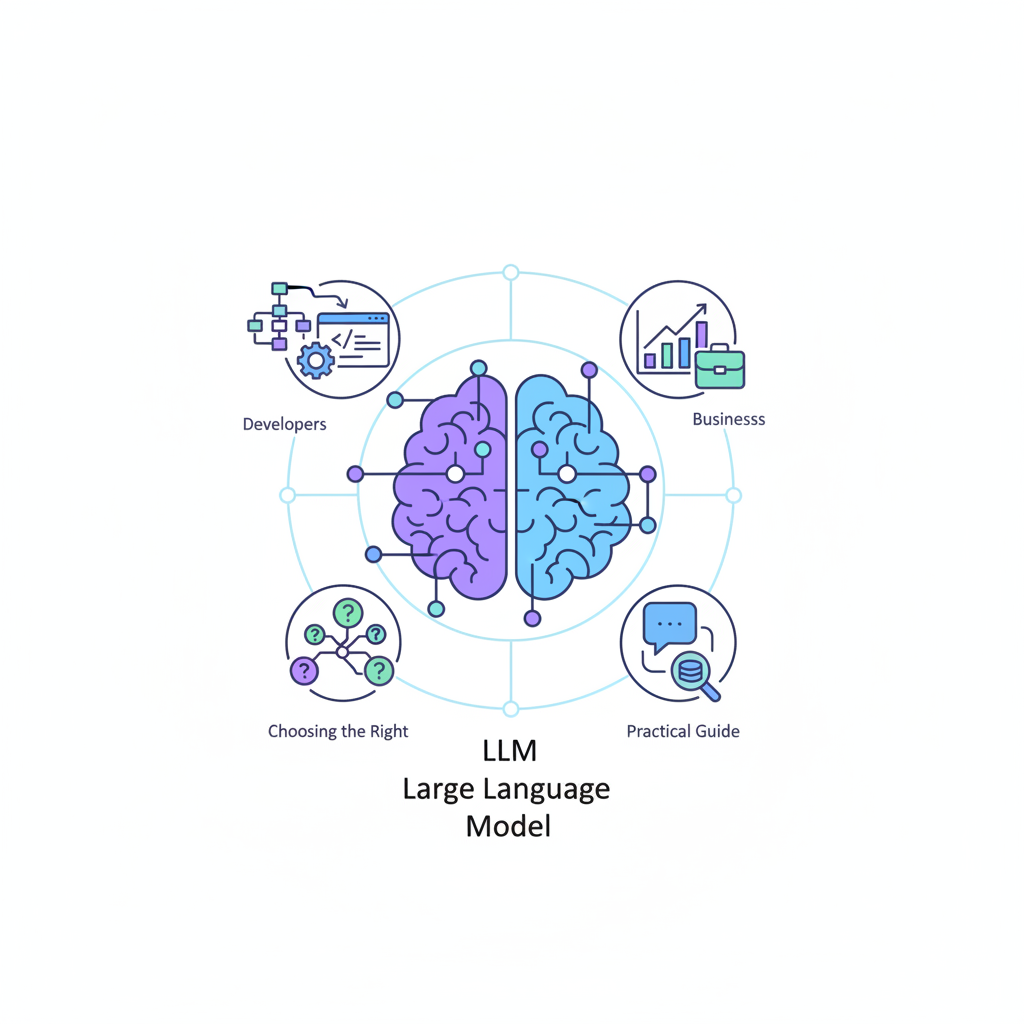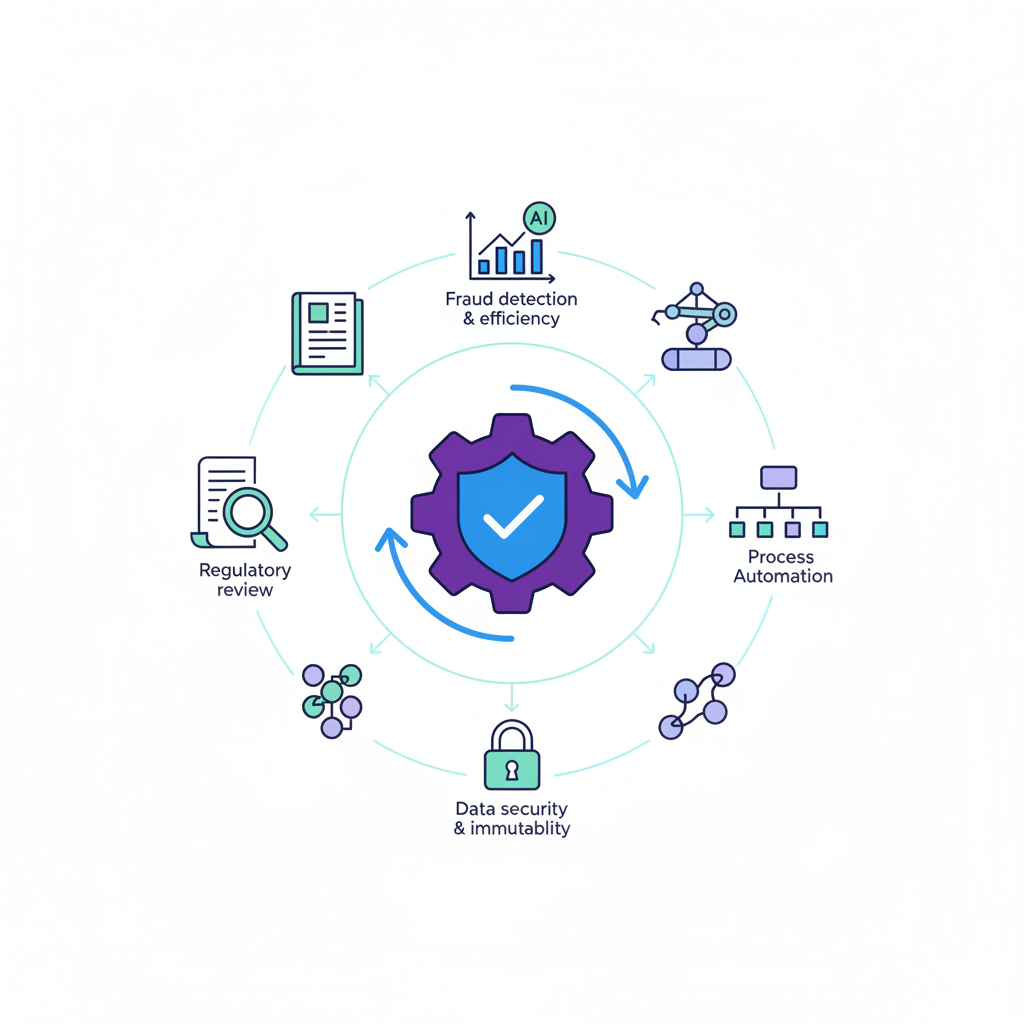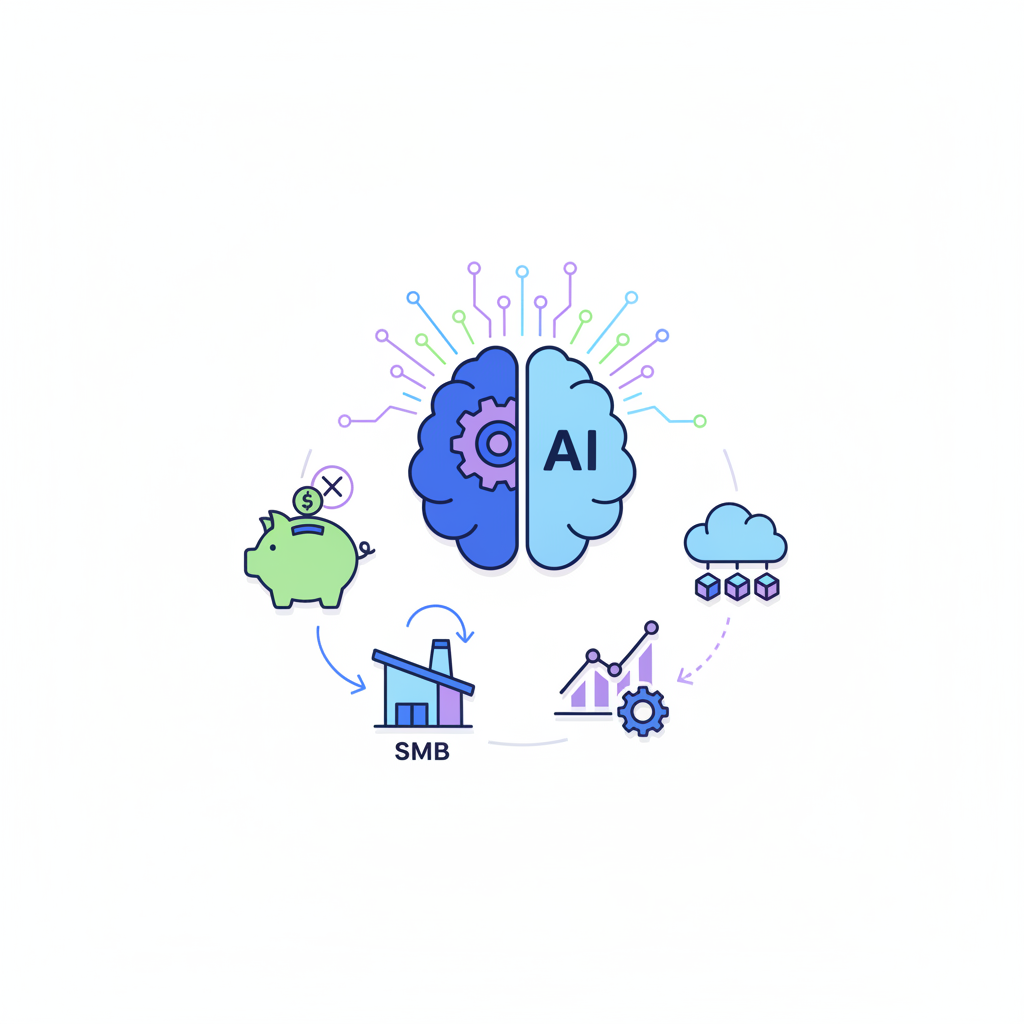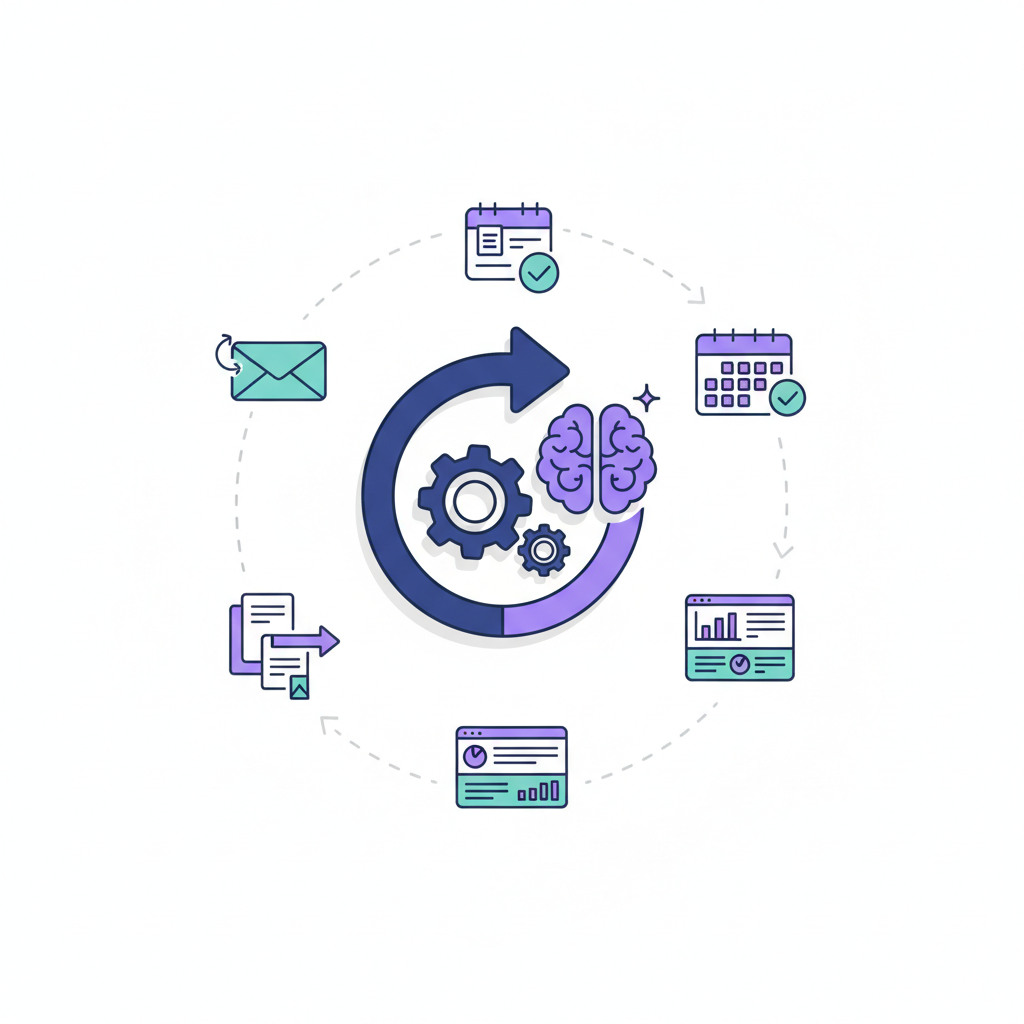Navigating the LLM Landscape: A Strategic Approach for Developers and Businesses
The advent of Large Language Models (LLMs) has ushered in a new era of technological innovation, transforming industries from healthcare to finance, and from creative arts to customer service. These powerful AI models, capable of understanding, generating, and manipulating human language with unprecedented fluency, are no longer just research curiosities; they are becoming indispensable tools for competitive advantage. However, this rapid evolution has also created an overwhelming complexity: the sheer volume of LLM options available today, each with its unique strengths, weaknesses, and operational nuances, can be daunting. Developers and businesses alike often find themselves grappling with the critical question of how to choose LLM that truly aligns with their strategic objectives and technical requirements.
This guide aims to cut through that complexity, providing a practical, step-by-step framework for choosing the right LLM. It’s designed to demystify the selection process, moving beyond superficial comparisons to offer actionable insights. We recognize that the needs of a software developer building a new application differ significantly from those of a business seeking to integrate AI into its core operations. Therefore, this guide offers tailored insights for both LLM for developers and LLM for business needs, ensuring relevance across the spectrum. We will cover everything from initial needs assessment and defining specific use cases to exploring the diverse LLM landscape, evaluating models against comprehensive criteria, planning for deployment and cost, and finally, optimizing and future-proofing your chosen solution. This comprehensive approach will empower you to make an informed, strategic decision in your AI development journey, ensuring your investment in large language models yields maximum impact.
Phase 1: Defining Your LLM Strategy and Use Case
The journey to choosing the right LLM begins not with evaluating models, but with a deep understanding of your own needs and objectives. Without a clear strategy, even the most advanced LLM will fail to deliver meaningful value. This initial phase is crucial for laying a solid foundation for your LLM for business or LLM for developers initiative.
Initial Needs Assessment: What Problem Are You Solving?
Before diving into the technicalities of large language models, it's imperative to conduct a thorough initial needs assessment. This involves identifying the core challenges and opportunities within your organization or project that an LLM is intended to address. Are you looking to automate repetitive tasks, enhance customer interactions, accelerate content creation, or gain deeper insights from unstructured data? Understanding the specific business or technical problem an LLM is intended to solve is paramount. This assessment should go beyond surface-level issues, delving into the root causes and potential impacts. A clear problem statement will guide your subsequent choices and prevent misallocation of resources. This foundational step ensures that your LLM initiative is purpose-driven and aligned with strategic goals, making how to select the right LLM for the right task a much clearer process.
Use Case Definition: From Concept to Application
Once the problem is identified, the next step is to clearly define specific LLM use cases. This involves translating your high-level problem into concrete applications. Examples of common LLM use cases include: content generation (marketing copy, articles, code snippets), code assistance (autocompletion, debugging, documentation), customer support (chatbots, FAQ generation), data analysis (summarization, sentiment analysis), and knowledge management (information retrieval, Q&A systems). For each use case, you must identify the scope, required functionalities, and desired outcomes. A well-defined use case provides a blueprint for your LLM implementation, ensuring that the chosen model can effectively perform the intended functions. This clarity is vital for both software development teams and business needs stakeholders.
Setting Performance Benchmarks and Success Metrics
To objectively evaluate the effectiveness of your chosen LLM, you must establish measurable objectives and define Key Performance Indicators (KPIs) upfront. These benchmarks will serve as your yardstick for LLM evaluation post-deployment. Measurable objectives could include: achieving 90% accuracy in customer query resolution, reducing content generation time by 50%, or improving user satisfaction scores by 15%. KPIs might encompass metrics like accuracy, speed (latency, throughput), cost reduction, user engagement, or specific business outcomes like increased sales or reduced operational expenses. Without these clear metrics, it's impossible to determine if your LLM initiative is truly successful or if you have indeed made the optimal choice. This foresight ensures accountability and provides a clear path for continuous improvement and optimization, making your large language models investment justifiable.
Phase 2: Exploring the LLM Landscape and Core Types
With your strategy and use cases clearly defined, the next phase involves navigating the diverse and rapidly evolving LLM market landscape. Understanding the fundamental types of large language models available is critical for making an informed decision. This phase will help you grasp the nuances that differentiate models and guide you towards choosing the right LLM for your specific context.
Open-Source vs. Proprietary Models: A Deep Dive
The choice between open-source and proprietary LLMs is one of the most significant decisions in LLM evaluation. Open-source LLMs, such as Meta's Llama 2, Mistral, and models on Hugging Face, offer unparalleled control, customization, and often, a vibrant community. Advantages include running models on-premise for enhanced data privacy and freedom to fine-tune extensively. However, they demand substantial internal expertise and infrastructure costs. Proprietary LLMs, like OpenAI's GPT-4, Anthropic's Claude, and Google's Gemini, are accessed via cloud APIs. Their primary advantages lie in superior out-of-the-box performance, ease of use, and robust vendor support. Proprietary models come with concerns about vendor lock-in, data privacy, and escalating API costs. The decision hinges on your organization's comfort with control versus convenience, and the availability of internal resources for AI development.
Specialized vs. General-Purpose: Matching Model to Task
General-purpose LLMs (e.g., GPT-4) are versatile, trained on diverse datasets, making them excellent for broad applications. However, they may lack deep domain-specific knowledge. Specialized LLMs, such as those fine-tuned for code generation (like GitHub Copilot's underlying models), excel in their designated domains, offering higher accuracy and relevance for niche applications, often with smaller computational footprints. How to select the right LLM for the right task often means choosing a specialized model when precision and deep knowledge are paramount, or a general-purpose model when flexibility is the priority for your business needs.
Key Players, Market Trends, and the Evolving Ecosystem
The LLM market landscape is dynamic, with key players like OpenAI, Google, Anthropic, and Meta constantly pushing the boundaries. Emerging trends include multimodality (processing text, images, audio), the development of smaller, more efficient models ("small language models" or SLMs), and the rise of agentic AI. Staying abreast of these trends is vital for future-proofing your AI development strategy and ensuring your chosen LLM remains competitive and relevant.
Phase 3: Comprehensive LLM Evaluation Criteria
Once you have a shortlist of potential LLMs, a rigorous LLM evaluation process is essential. This phase delves into the critical criteria that will help you objectively compare and contrast models, ensuring you are choosing the right LLM that not only performs well but also aligns with your ethical and operational standards. This is where the rubber meets the road for LLM for developers and LLM for business alike.
Technical Performance: Accuracy, Latency, and Throughput
Technical performance is often the first consideration when evaluating LLM options. Key LLM metrics include accuracy (assessed using benchmarks like perplexity, BLEU, or human evaluation) and the hallucination rate. Beyond accuracy, latency (response time) and throughput (requests handled per unit of time) are critical, particularly for real-time applications. High latency severely degrades user experience, while insufficient throughput can lead to service disruptions. Model performance in these areas directly impacts the usability and scalability of your solution.
Ethical AI, Data Privacy, and Security Considerations
Responsible AI principles are fundamental. You must thoroughly assess the ethical implications, evaluating for fairness and bias mitigation. Data privacy and security are non-negotiable. Ensure robust measures are in place for handling Personally Identifiable Information (PII) and sensitive data, including encryption and access control. Scrutinize vendor agreements regarding data usage and ensure compliance with regulations like GDPR, HIPAA, and CCPA. Compliance is a critical aspect of your business needs and legal obligations.
Fine-tuning Capabilities and Customization Potential
The ability to fine-tune an LLM is a powerful differentiator for domain-specific tasks, significantly improving accuracy and tailoring the model's behavior. When evaluating LLM options, assess the ease of fine-tuning: data requirements, available tools and platforms, and required computational power. For LLM for developers, robust fine-tuning capabilities offer greater flexibility and control. A comparative analysis table for popular LLMs across these criteria – technical performance, ethical considerations, and fine-tuning capabilities – would be invaluable here, highlighting strengths and weaknesses for different use cases.
Phase 4: Deployment, Infrastructure, and Cost Analysis
Beyond the model itself, the practicalities of deployment, the underlying infrastructure, and a comprehensive cost analysis are pivotal factors in choosing the right LLM. This phase addresses the operational and financial considerations that will dictate the long-term viability and success of your large language models initiative.
Deployment Models: On-Premise, Cloud API, and Hybrid Approaches
The choice of deployment models significantly impacts control, scalability, and data residency. On-premise LLM deployment offers maximum control and security but demands substantial upfront investment in hardware (GPUs) and internal expertise. Using a cloud API (e.g., OpenAI API, Google Cloud AI, AWS Bedrock) provides unparalleled ease of use, scalability, and reduced operational overhead, often being the fastest way to get started with LLM for developers. Hybrid models offer a balance, allowing organizations to tailor their strategy to specific business needs and security postures. Understanding these options is crucial for future-proofing your LLM strategy.
Infrastructure Requirements and Scalability Planning
For on-premise or self-hosted open-source LLMs, assessing the necessary infrastructure requirements (high-performance GPUs, software environments) is critical. Scalability planning ensures your solution can handle increased traffic and data volumes without performance degradation. For cloud API users, scalability is largely handled by the vendor, but budget must account for increased API usage. For self-hosted solutions, planning for future-proofing means adopting containerization technologies like Docker and Kubernetes.
Comprehensive Cost Analysis: Beyond API Tokens
A thorough cost analysis extends beyond the per-token fees. For proprietary models, consider tiered pricing and unexpected usage spikes. For self-hosted models, costs are distributed: Infrastructure costs (hardware, power), fine-tuning costs (data preparation, compute resources), ongoing maintenance (monitoring, updates), and specialized personnel salaries. Neglecting any component can lead to significant budget overruns. A holistic view is vital for calculating the true ROI for LLM investments.
Measuring Return on Investment (ROI) for LLM Initiatives
Defining and measuring the ROI for LLM investments is crucial. ROI can be measured through: Efficiency gains (reduced operational costs, increased productivity), revenue generation (new product offerings, improved sales), and risk mitigation (enhanced security). Establish clear baselines before deployment and continuously track KPIs. A clear understanding of how to measure ROI will ensure your LLM investments are strategic and justifiable.
Phase 5: Tailoring Selection for Developers vs. Businesses
While many LLM selection criteria apply universally, the emphasis shifts significantly depending on the primary user. Recognizing these distinct selection criteria is key to choosing the right LLM that truly serves its intended audience.
Developer-Centric Criteria: APIs, SDKs, and Community Support
For LLM for developers, the focus is on practicalities of integration. High-quality API documentation and robust SDKs (Software Development Kits) for popular languages are paramount. Developers prioritize integration ease into existing software architectures. Performance metrics like latency and throughput are critical. Beyond technical specs, a strong community support ecosystem (active forums, GitHub repositories) is invaluable for troubleshooting and best practices, significantly accelerating development time and enhancing the quality of the final product.
Business-Centric Criteria: Compliance, Legal, and Vendor Support
For LLM for business applications, the emphasis shifts towards operational stability and risk management. Major concerns include vendor lock-in and legal terms (data ownership, IP rights). Service Level Agreements (SLAs) are critical, outlining guaranteed uptime and support response times. Compliance with industry-specific regulations (GDPR, HIPAA) and internal data governance policies is non-negotiable. The quality of vendor support (dedicated account managers, technical teams) is a key differentiator, particularly for enterprise-level deployments, ensuring business continuity.
Phase 6: Integration, Risk Management, and Regulatory Compliance
The successful adoption of large language models critically depends on seamless integration, robust risk management, and unwavering adherence to regulatory frameworks. This phase guides you through the practical steps to embed your chosen LLM into your operations while safeguarding against potential pitfalls.
Seamless Integration into Existing Systems and Workflows
Seamless integration involves thoughtfully incorporating the LLM into your current software architectures and business processes. Best practices include designing modular systems for easy LLM swapping, using standardized APIs, and ensuring robust data pipelines. Integration challenges often relate to data formats, authentication, and error handling. For LLM for developers, this means leveraging SDKs and building robust error handling. For LLM for business, it involves mapping existing workflows and employee training, ensuring the LLM becomes an enabler, not a bottleneck.
Mitigating LLM-Specific Risks: Hallucinations, Security, IP
Risk management strategies are essential. Mitigating hallucinations (generating plausible but false information) requires strategies like Retrieval Augmented Generation (RAG) to ground responses in verified knowledge, fact-checking mechanisms, and precise prompt engineering. Data security breaches are a concern; implement robust data anonymization, encryption, and access control. Intellectual property concerns necessitate clear policies regarding AI-generated content ownership and infringement checks. These proactive measures are vital for responsible AI development.
Regulatory Compliance and Industry-Specific Data Governance
Navigating the complex landscape of regulatory compliance is non-negotiable. Regulations like GDPR, HIPAA, and CCPA impose strict requirements on data processing. Your LLM solution must adhere to these standards, involving: Data governance (clear policies for input, output, retention), consent management, audit trails, and bias audits. For LLM for business, especially in regulated sectors, partnering with vendors who offer strong compliance certifications is crucial.
Phase 7: Post-Selection: Monitoring, Optimization, and Evolution
Choosing the right LLM is not a one-time event; it's the beginning of an ongoing journey. This final phase focuses on the continuous processes required to ensure your LLM solution remains effective, efficient, and aligned with your evolving business needs.
Building Internal Expertise and Team Skills
Successful long-term LLM implementation hinges on building internal expertise and team skills. Key roles include ML Engineers, Data Scientists, Prompt Engineers, and AI Ethicists. Upskilling existing teams through training programs and fostering a culture of continuous learning will empower your teams to leverage the full potential of large language models and adapt to new advancements. This internal capability is vital for both innovation and sustained operational excellence.
Continuous Performance Monitoring and Optimization Strategies
Implement tools to track key LLM metrics such as accuracy, latency, and hallucination rates. Monitor for model drift (performance degradation over time). Optimization strategies include: iteratively refining prompts (prompt engineering), enhancing the model with up-to-date information (RAG), and conducting A/B testing with different models or configurations. This iterative process is fundamental to maintaining effectiveness.
Future-Proofing Your LLM Strategy: Scalability and Migration
Future-proofing your LLM strategy is essential in this dynamic landscape. Plan for future scalability needs and design your system with modularity to accommodate easy LLM migration or switching. Stay agile by continuously evaluating new advancements and being prepared to adapt your strategy to leverage the latest innovations. This forward-thinking approach ensures your investment remains relevant and competitive.
Conclusion: Your Strategic Path to LLM Success
Choosing the right LLM is undeniably a strategic, multi-faceted decision, extending far beyond mere technical specifications. It's a journey that demands careful planning, rigorous evaluation, and continuous adaptation. This practical guide has laid out a comprehensive framework, moving from initial needs assessment to post-deployment optimization, designed to empower both LLM for developers and LLM for business stakeholders in making informed choices.
The key takeaways emphasize the critical importance of aligning your LLM choice with specific, well-defined business needs and technical requirements. Understanding the dynamic LLM market landscape, and meticulously evaluating models against criteria like performance, ethics, and customization, are non-negotiable steps. Furthermore, considering long-term implications such as deployment models, comprehensive cost analysis, and the need for continuous monitoring and optimization ensures sustained success.
We encourage you to leverage this LLM selection guide as your roadmap. Begin your structured evaluation process today, taking the time to define your objectives, explore the options, and assess each candidate thoroughly. The AI world is evolving at an astonishing pace, so be prepared to continuously adapt your LLM strategy and embrace new advancements. When selected thoughtfully and managed strategically, the right LLM is not just a tool; it's a powerful asset that can drive significant innovation, unlock new efficiencies, and provide a substantial competitive advantage in today's data-driven economy.








